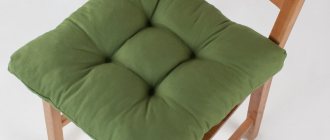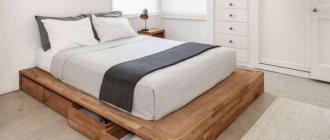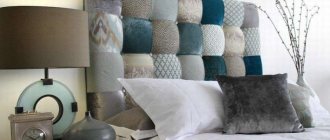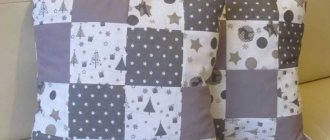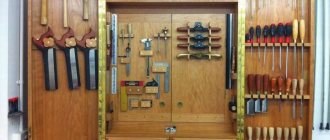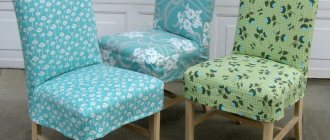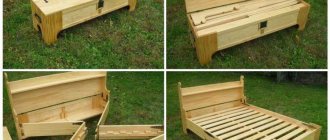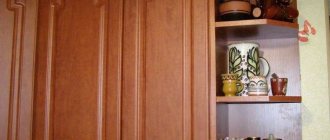Using pillows, you can beautifully decorate your home furniture
When monotony and routine reduce your mood, imagination and creativity come to the rescue! It would seem that everything is fine in the interior, but some small touch, a bright and original detail is missing to turn a designer renovation into a cozy home.
Original, sincere, handmade accessories that retain the warmth of the hands of a master are the easiest way to harmony in the house, an ideal way to create a cozy atmosphere and diversify the interior. Stylish and soft decorative pillows for chairs are one of the variations on the theme of budget, functional and original design.
Selecting fabric and filling for the seats of chairs and stools
At the very beginning, you need to choose the right material from which the pillow will be sewn. For it, it is worth taking durable and wear-resistant materials, such as rep, teak or satin. In the case where the furniture is planned to be used outdoors (in cold conditions), it is better to use felt fabric or old jeans.
Pillows for chairs
Additional Information. Cushions can be made not only for chairs and stools, but also for armchairs, sofas and other furniture. The only difference will be the size of the product.
After determining the color of the future craft, you will need to choose a filler for it. In this case, you should pay attention to the following characteristics of the material:
- Elasticity.
- Resistance to deformation.
- Durability.
- Environmental Safety.
Based on the given criteria, it is recommended to choose holofiber, padding polyester or foam rubber. The best option would be latex.
Filler
Selection of materials for work
Making your own cape should begin with an informed choice of materials. First of all, in this matter it is necessary to start from whether the furniture will be used only indoors or outdoors.
The easiest way to add comfort and beauty to your home is to create soft seat covers for stools or chairs.
If you plan to use it outdoors, you should avoid using upholstery materials that are too delicate, such as silk. One of the alternative options is to bring the seats indoors if the chairs are not planned to be used for some time.
Fabric selection
The following fabrics are most often used in the manufacture of these accessories:
- linen
- cotton
- lycra
- gabardine
The most practical of these materials is linen; it can be used even in the most unfavorable conditions for other types of fabrics. The fabric itself is quite rough and is best suited for the kitchen.
Some people think that linen clothes look quite rough. Others, on the contrary, appreciate her good qualities.
Cotton is a natural material that is great for indoor use. Outside they can get wet quite quickly, absorbing moisture. Like linen, it can be dyed in different patterns, but unlike the first one it does not look as spartan.
Cotton fabrics are practical, beautiful, and varied.
Lycra is pleasant to the touch, reminiscent of silk. Due to their characteristics, seats made of such material must be securely attached to chairs, otherwise they can slide quite a lot on their surface. Shiny, solid lycra upholstery is an excellent choice for those who love bright, stylish accessories.
Among the advantages are high elasticity, repetition of the body shape, and “breathing” properties.
Gabardine is one of the most pliable and easy to handle materials. It has sufficient density and is quite easy to wash.
Classic gabardine is a natural fabric made from a certain type of wool, namely the wool of Merino sheep.
To make it easy for pillows to return to their original appearance, you can provide an additional snake to remove the filling during the washing period.
You can choose the material and type of the future product from thousands of options.
Note! It is not forbidden to wash the seat together with the filling, but in this case it is necessary to strictly observe the temperature requirements for the material used.
Filler
For fillers it is common to use:
- natural materials
- feather
- sawdust
- buckwheat
- sheep's wool
- synthetic materials
- expanded polystyrene
- polypropylene
- foam rubber
- padding polyester
Natural materials are highly environmentally friendly. At the same time, compared to synthetics, they have a much shorter service life, especially when it comes to outdoor use.
Pillow filling is an important criterion that determines their quality and functionality.
Down and feathers create a feeling of the highest softness in the seat; when using sawdust, coniferous wood is usually used, thus also creating an aromatic effect. The buckwheat filler creates additional support, but at the same time conveniently follows the anatomical features of the human body. Sheep wool is not only soft and pleasant to the touch, but also has a warming effect.
Sheep wool, as well as its filling, are known for their many positive properties.
No less often, synthetic materials are used along with natural ones.
The most economical, but at the same time the least durable, are foam rubber and padding polyester. They are a shock-absorbing layer; the foam rubber from this pair is less prone to caking. Expanded polystyrene granules resemble buckwheat in their properties, but are softer in structure and also tend to cake.
Foamed polystyrene foam granules have found their use as a filler for frameless furniture and pillows that have become fashionable.
The most practical synthetic material can be called polypropylene - it is a medium-hard foam filler with excellent durability characteristics.
Color selection
When choosing the color of a cushion, you should not be guided only by the color of the furniture. You can choose a fabric of a color that will look harmonious with curtains, wallpaper or other interior items.
Pillow colors
But first of all, the color must correspond to the purpose of the product. If you just need it for convenience, then it is better to choose calm, neutral colors. When you want to add some zest to the design of the room, you can choose a bright fabric with an unusual pattern. Sewing threads are chosen in the same color as the material from which the pillow will be made.
You may be interested in this Instructions and patterns for sewing straight skirts
Useful tips
Do-it-yourself chair cover: how to sew soft covers for chairs and armchairs (130 photos and videos)
Sewing a chair cover is quite simple, but nevertheless there are several important rules that will help you significantly save time and avoid many mistakes when working with fabrics:
- Calculate the dimensions. Once you have made all the necessary patterns, you will need to calculate the required fabric consumption. Check your measurements carefully and don’t forget about seam allowances and all other details of the cut. It is advisable to sew with a margin, because if the product shrinks after washing, you may simply not be able to put it on the chair.
- Train on cheap material. If you haven't tried sewing before, try your hand at toy furniture. As a practice, you can sew a full-size cover, but use cheap old fabric, such as an old sheet.
This way you can not only practice cutting and sewing, but also experiment with style and decor.
- Don't forget about the fasteners. The product should be tightly fixed to the chair, so use reliable ribbons so that you can tie them around the legs of the chairs. For universal models, choose longer ribbons, since the height of the legs may differ for different furniture and this must be taken into account.
- Don't use too expensive material. If you are sewing a product for work areas like the kitchen, you should not buy too expensive fabric. Expensive jacquard is also not suitable for a dining room, because food can leave permanent stains, and expensive materials are unlikely to withstand treatment with stain removers. To avoid spending extra money on dry cleaning, use cotton or an inexpensive blended fabric.
By following all the advice of professionals and practical recommendations, you will be able to make practical and beautiful covers without much effort. And by using your imagination, you can turn them into real works of art, decorating them with unusual decor or embroidery.
With the help of the right materials and colors, you can refresh the interior; you just need to know how to properly sew chair covers with your own hands. Such products will hide all external scratches and defects, but you will still be able to enjoy the comfort and durability of your favorite chair.
Preparing the ties
First of all, the ties are needed to prevent the pillow from sliding off the seat. But sometimes they can be used as design elements for a product. To make ties, beautiful ribbons, laces, ropes and just strips of fabric are suitable.
Ties
After completing the preparatory work, select your favorite master class on sewing a pillow and then all actions are carried out according to the instructions. It is worth considering the simplest manufacturing option, which even a novice needlewoman can handle.
Pattern
Making a pattern for a chair seat is not difficult. To do this, determine the dimensions of the seat for which the accessory will be made. It is worth considering that after stuffing with filler, the dimensions of the product decrease, so the fabric must be prepared with a margin of a couple of centimeters on each side. You also need to decide what shape the finished item will be. A round pillow is more versatile - it will fit almost any stool or chair.
Round pillow
After calculations and measurements, a figure of the chosen shape is drawn on a sheet of paper and cut out using scissors.
Additional Information. To ensure that the pattern exactly matches the dimensions of the seat, you need to use tracing paper.
It is applied to the surface and outlined with a marker.
How to make a knitted round chair cushion
Each of us is free to decide whether a cushion will be sewn for the stool or, to suit our own preferences, we will have to make a knitted version. In the second case, a soft item for interior decoration and increased comfort is knitted from yarn using a hook or knitting needles. To make a round chair cushion with your own hands, follow the circular pattern.
Such products are often made in the form of thin mats for benches, plastic or wooden chairs, or for the back of a chair.
Note! With a preference for knitting, there will be no problem creating colorful seats similar to the patchwork technique. To do this, the product is made by connecting multi-colored rhombuses, squares, etc. together.
It will not be difficult to prepare soft knitted items from pompoms. For their manufacture, the remains of any colored yarn, previously wound on a template or fingers, are suitable. To get a fluffy ball, the base must be tied in one place, cut and fluffed. Well, then the pompoms are tied at the same distance onto a mesh base made of plastic, curtain fabric or crocheted mesh. In addition, knitted pillows can be decorated with tassels in the corners.
Additional Information! Seats for stools turn out to be especially beautiful if they are knitted from fancy yarn, similar in appearance to “fur” or “grass”. Moreover, you choose the knitting density and pattern yourself.
Step-by-step sewing instructions
You can sew pillows with your own hands according to these step-by-step instructions:
- The pattern is marked and cut along the contour.
- The filler material is applied to the pattern and the element of the required size is cut out. After that, fabric is applied to the resulting part, and two identical parts are cut out of it with an allowance of 1.5 cm for the dimensions of the filler.
- The edging is stitched and attached to the top piece of fabric. The two pieces of the pillow are then folded together, pinned, and stitched together. There is only a small pocket left to insert the filler. All allowances, undercuts and corners are turned inside.
You may be interested in this: Sew knitted items using a needle and knitting needles
Stitching a pillow
- Mark the required number of places where the ties will be attached. The material from which they will be made is selected and cut to the required length. Each piece is then folded in half to form a ring and sewn onto the underside of the pillow.
Ties
- The resulting cover is carefully ironed and filler is stuffed into it. After which the hole is removed. To do this, the edge is leveled, the allowances are folded inward and sewn with a hidden seam.
- If the option of making a quilted pillow is chosen, then at this stage all other seams are sewn.
- If necessary, the pillow can be decorated with additional elements.
Sewing using the patchwork technique
This technique involves making a pillow from several pieces. For this purpose, fabrics of different colors, textures and even sizes are taken. The more each detail differs from the rest, the more interesting the finished product will be.
Patchwork
After selecting the materials, the pattern is prepared. It all depends on your own imagination. You can make flaps of the same sizes and shapes, or you can make them different. After the pattern is completed, the resulting pieces should be carefully sewn together so that the resulting shape of the future pillow is obtained. The inner side of the product is made using the same method or from a single piece of fabric. The resulting parts are carefully ironed.
A padding polyester cut to size is applied to the front side and attached to the fabric. Then both sides of the pillow are applied to each other with the outer sides and sewn together. There remains only a small hole through which the product is turned inside out. After which the pillow is ironed again, and the remaining hole is stitched with a hidden seam.
Important! To ensure an even seam when using a sewing machine, it must be worked slowly.
Then, when wrinkles appear, there will be time to smooth them out.
The process of making a seat for a stool in the kitchen
Having in our arsenal the materials necessary for the seat, we begin to manufacture it.
- We mark on the filled fabric the size of the future pillow and accessories for attaching it. We make such markings with a margin (2cm will be more than enough) for comfortable sewing.
- Using scissors, we cut the material into the required number of pieces - for a pillow, two equal halves of fabric plus strips for ties are enough. Or we sew on Velcro or elastic.
- We sew the pillow and fix the pre-made ties at its corners.
- We insert the filler and stitch the last side of our pillow. If a snake was used, simply close it.
Overhead seats are much easier to care for than upholstered chairs, because they can be removed at any time and put in the washing machine.
The sequence of actions is quite simple and with a little experience you can sew a good dozen pillows in just one day.
This option is well suited for decorating chairs in the kitchen, children's room, and hallway.
As you can see, there is nothing complicated in decorating your chairs with pleasant accessories. Especially if you carefully follow the tips offered in this article, you can easily learn how to make a soft seat on a stool.
Any chair seats are very easy to sew, and even if you don’t have a sewing machine at home, you can spend a little more time sewing such an accessory by hand.
Decoration
Whatever option for making pillows is chosen, they can later be decorated with additional decorative elements. But here it is worth considering what this piece of furniture will be needed for. If the pillow is needed only as a room decoration, then it can be decorated with beads, beads, sequins and much more. If it is used for its intended purpose, then it is better to discard such elements.
You might be interested in: Creating patterns and sewing children's mobiles from felt with your own hands
Applications
To ensure that nothing causes inconvenience when sitting on a chair, you need to decorate the pillows with materials that are not too bulky. These can be various applications, fringe or buttons. The latter not only decorate the product, but also keep the filler from clumping.
Buttons
It is better to cover buttons with fabric. The color is chosen like the pillow or one that matches it. After this, the surface of the product is marked so that the decorations are located at an equal distance from each other. In the indicated places, the buttons are firmly sewn to the pillow.
DIY pillows
Thus, it can be seen that it is quite easy to sew seats on stools with your own hands. It is enough to stock up on the necessary materials and patience. And ready-made decorative elements will subsequently decorate and update the appearance of the apartment.
Pillow care
All items that come into contact with people in one way or another need sanitary and hygienic procedures. Seats for benches will be no exception. It is noteworthy that proper care of them prolongs their operation, maintaining an attractive appearance and shape. The appropriate procedures depend entirely on the design features and type of filler.
Bright decorative pillows have a great effect not only on the mood, but also on the entire environment as a whole.
In some cases, washing is allowed (hand or gentle in a washing machine). If light and monochrome products can be placed in water with a temperature of 40 degrees, then the presence of bright and combined shades forces the use of exclusively cold water. Some items can only be dry cleaned by a professional dry cleaner.
The product must be dried in a horizontal position. This is the only way to prevent the filler from clumping. When unfolding the seat, do not allow any folds to form. The item should be turned over from time to time. As for ironing, it is not recommended.
To change the mood and dynamics of the interior of the room, just change the covers on the decorative pillows, and you will get new unforgettable impressions from the comfort and relaxation zone.
If all instructions regarding sewing, operation and care are followed, things will delight us with comfort and aesthetic appeal for a long time. Moreover, making cushions for stools and chairs does not require any special skill. It is also important that working with your own hands increases self-esteem and serves as an excellent opportunity to decorate your own home without additional costs.
